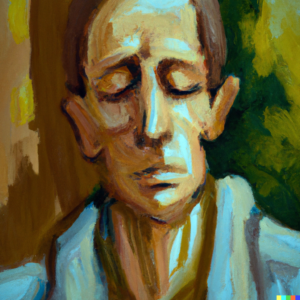 Introduction
Introduction
Hypogonadism is a condition that occurs when the body does not produce enough sex hormones. This can be due to either primary or secondary hypogonadism. Primary hypogonadism is when your body does not make enough testosterone or estrogen, while secondary hypogonadism is caused by another medical condition that affects the testicles, ovaries, pituitary gland, hypothalamus or brain.
Hypogonadism facts
- Hypogonadism: a condition defined by low levels of sex hormones (testosterone and estrogen) and low levels of sperm in men. It can also be described as the failure of the testes to produce these hormones normally.
- How common is hypogonadism? The prevalence of primary hypogonadism ranges from 1 in 200 to 1 in 1000 people. Secondary hypogonadism, on the other hand, affects about 0.5% of adult men over 45 years old or older. Most commonly affected areas include; United States, Europe, Australia and New Zealand.* What are symptoms of hypogonadism? The main symptoms include reduced sex drive or erectile dysfunction (ED), lack of energy and loss of body hair.* Causes Of Primary & Secondary Hypogonadism: # Causes Of Primary Hypogonadism – Kallman’s syndrome – Genetic mutations or deletions leading to abnormal development during fetal life due to genetic variations caused by either new mutations or polymorphisms present in each cell type at birth.# Causes Of Secondary Hypogonadism – Pituitary disease: pituitary tumors may cause insufficient production/ secretion by the anterior pituitary gland leading to secondary signs such as infertility
- Exogenous testosterone supplementation : testosterone replacement therapy (TRT) prescribed after receiving medical advice
Causes of Primary Hypogonadism
- Testosterone deficiency can be caused by a problem in the testicles (testes), pituitary gland, or hypothalamus.
- The testes produce testosterone, which is released into the bloodstream and directed to the hypothalamus by way of the pituitary gland. The hypothalamus controls this process by releasing gonadotropin-releasing hormone (GnRH). When GnRH is released, it stimulates the pituitary to release luteinizing hormone (LH) and follicle-stimulating hormone (FSH), which travel through circulation to stimulate Leydig cells within testes to produce testosterone.
Causes of Secondary Hypogonadism
There are many causes of secondary hypogonadism, including:
- hormonal imbalance
- thyroid hormone deficiency
- pituitary gland disease.
- kidney disease.
- testicular failure.
- prostate cancer.
- seizures.
- alcoholism or drug abuse (excessive use of certain medications can also cause this condition).
- obesity and diabetes mellitus (high blood sugar).
Presentation of Secondary Hypogonadism
Secondary hypogonadism is often caused by other diseases or conditions. For example, a pituitary tumor can interfere with the production of the luteinizing hormone (LH) and follicle-stimulating hormone (FSH) that regulate testosterone levels.
This article from Harvard Medical School describes some of the possible causes of secondary hypogonadism:
https://www.healthline.com/health/secondary-hypogonadism
How to tell which type of hypogonadism I have?
 In primary hypogonadism, testosterone levels are low and gonadotropin-releasing hormone (GnRH), luteinizing hormone (LH) and follicle-stimulating hormone (FSH) are high-normal to high. In secondary hypogonadism, testosterone levels fall in association with normal or low GnRH, LH and FSH.
In primary hypogonadism, testosterone levels are low and gonadotropin-releasing hormone (GnRH), luteinizing hormone (LH) and follicle-stimulating hormone (FSH) are high-normal to high. In secondary hypogonadism, testosterone levels fall in association with normal or low GnRH, LH and FSH.
If you are over 40, you may have low testosterone. This can cause a variety of symptoms such as:
- Fatigue
- Low sex drive
- Loss of muscle mass
If you have any of these symptoms, it is important to get them checked out by your doctor. While there are some things that can be done at home to help alleviate some of the symptoms, it’s important not to try those first before seeking medical attention. If left untreated, low testosterone can lead to more serious health problems such as heart disease and osteoporosis later in life. If you think that you may be experiencing secondary hypogonadism, talk to your doctor about what options are available for treatment (such as hormone replacement therapy).
If you think you might have low testosterone, consult with a doctor. You can get tested and then get the treatment you need.
You cannot self-diagnose low testosterone. If you think you might have it, consult with a doctor. They will be able to do the tests necessary and prescribe the treatment that’s best for you.
You should not take testosterone supplements or injections without consulting your doctor first. Taking them can be dangerous if there is no underlying cause for having low levels of the hormone in the first place, so it’s important that you talk to someone before taking anything like this on yourself.
Your primary care physician will likely make recommendations about how often and when these tests should be done during regular checkups every year or two, but if you suspect something is wrong with your hormones (or know something has changed recently), then it may be worth talking to them more frequently than usual so they can monitor how things are progressing over time
Conclusion
The information in this article is for educational purposes only and should not be used for diagnosis or treatment of any medical condition. If you think you might have low testosterone, consult with one of our professionals today.
